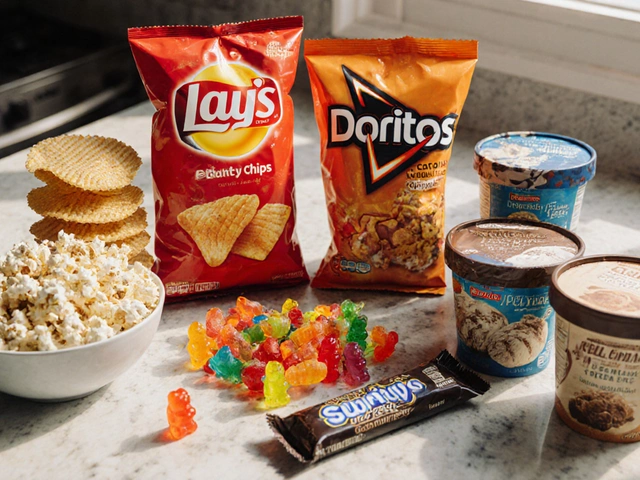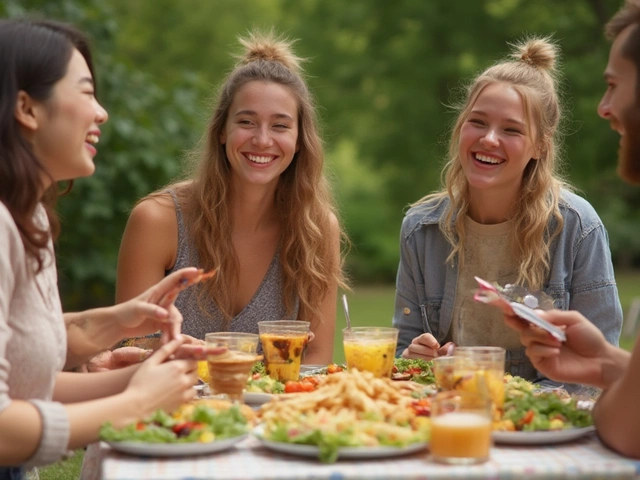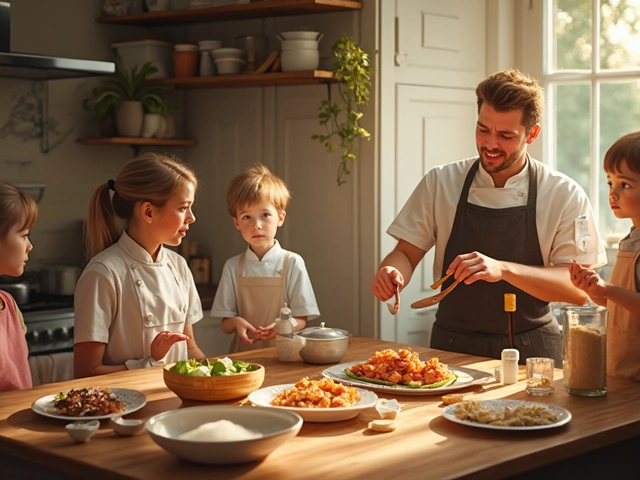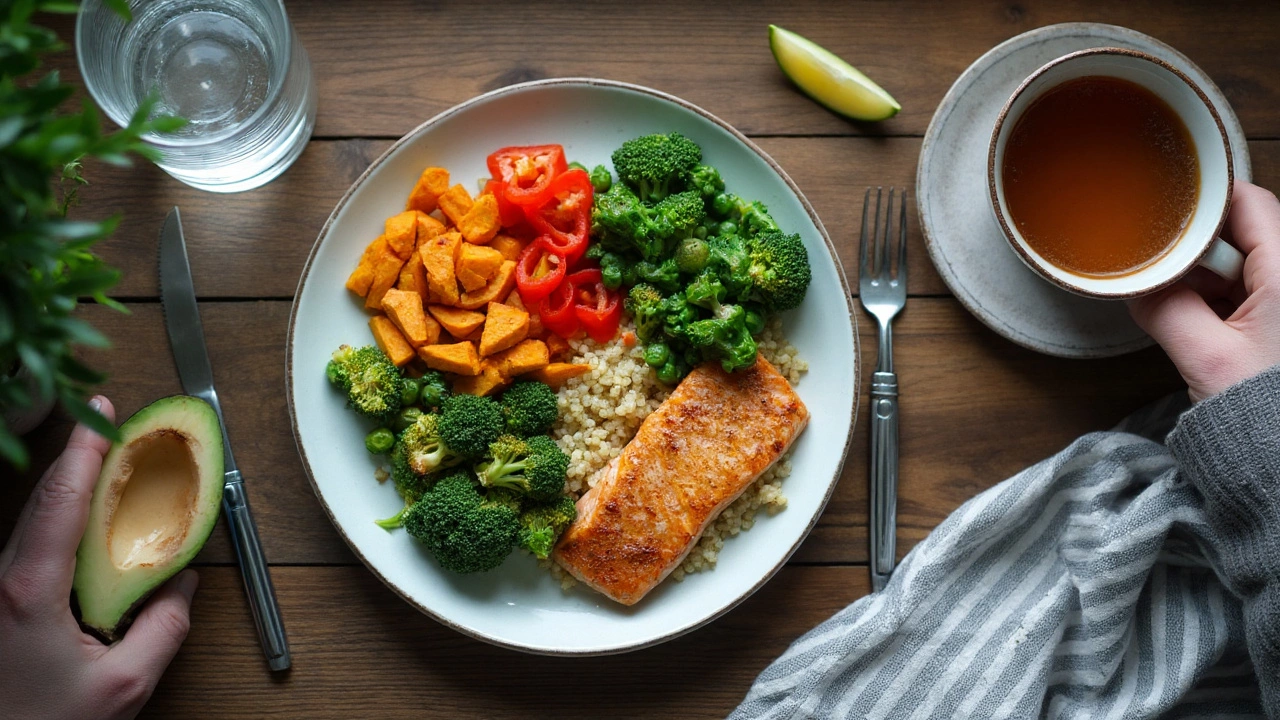
You want the most filling meal-something that leaves you satisfied for hours without a crash or a snack raid. Here’s the honest truth: there isn’t a single magic dish that wins for everyone. But there is a reliable formula backed by solid research that lets you build a super-satisfying plate from whatever cuisine you like. By the end, you’ll have a quick blueprint, exact portions to aim for, real-life meal examples, a satiety table, and fixes for common roadblocks like tight budgets, plant-based eating, and busy schedules.
TL;DR: The Most Filling Meal (Summary)
- Base your plate on four levers: protein, volume, fiber, and a little fat. This combo beats hunger longer than any one nutrient alone.
- Targets for one main meal: 30-50 g protein, 12-20 g fiber, 500-800 g food volume (lots of watery veg and tubers), and 10-20 g fats. Calories: 500-800 for most adults.
- Best bets: lean proteins (fish, chicken, tofu, Greek yogurt), high-fiber carbs (potatoes, oats, beans, lentils, barley), and low-calorie-density veggies (broccoli, mushrooms, spinach).
- Why it works: Protein and fiber trigger fullness signals; water-rich, low-calorie-density foods stretch the stomach; a bit of fat slows digestion. See work by Holt et al. (1995) on the Satiety Index and Rolls (Penn State) on energy density.
- Simple plate rule: Half vegetables, a quarter protein, a quarter high-fiber carbs. Add a thumb of healthy fat. Season hard and eat mindfully.
How to Build a Truly Filling Plate (Step-by-Step)
The goal is to tick four boxes every time you cook: protein, volume, fiber, and fat. You don’t need perfection-hit the ranges and your hunger will calm down.
Lock in protein (30-50 g). Protein blunts hunger and keeps you steady. Practical picks per portion: 150-200 g cooked chicken or fish (30-45 g protein), 250 g Greek yogurt (23-25 g), 200 g extra-firm tofu (24-26 g), 2 cups cooked lentils (36 g). A good target per meal is about 0.4-0.6 g per kilogram of body weight, which matches muscle protein synthesis data reported by Schoenfeld and Aragon (2018).
Add high-volume, low-calorie foods (500-800 g total plate weight). This is a big lever. Think boiled or roasted potatoes, zucchini, mushrooms, tomatoes, leafy greens, cabbage, cucumbers. Rolls’s research on energy density shows that water-rich foods let you eat a lot for fewer calories and feel fuller.
Hit 12-20 g fiber. Fiber adds bulk and slows digestion. Mix viscous fibers (oats, chia, beans) with insoluble fibers (vegetables, potatoes with skin). A long-standing guideline from the Institute of Medicine is ~14 g fiber per 1,000 kcal-so 12-20 g is a smart range for a main meal.
Include 10-20 g fats. Fat carries flavor and helps satiety, but it’s energy-dense. Use measured amounts: 1-2 tablespoons olive oil, 30 g nuts, a quarter avocado, or a spoon of tahini. Enough to help hunger, not so much that it crowds out volume.
Portion guardrails (adjust by size and activity):
- For fat loss/higher satiety per calorie: 500-650 kcal; protein 35-50 g; fiber 15-20 g; volume 600-900 g; fats 10-15 g.
- For maintenance/athletes: 650-900 kcal; protein 40-60 g; fiber 12-18 g; volume 600-900 g; fats 15-25 g.
Plate method for fast assembly. Half plate non-starchy veg (broccoli, peppers, greens), a quarter protein, a quarter high-fiber starch (potatoes, beans, lentils, barley, oats). Dress with a thumb of healthy fat. Season and add acid (lemon, vinegar) so it tastes great without extra calories.
Cooking moves that add fullness without calories. Roast a mountain of veg at once (big sheet pans). Boil or steam potatoes instead of frying. Use broth to sauté, then finish with a teaspoon of oil at the end for flavor. Stir in herbs, pickled onions, citrus, chili flakes.
Watch the usual satiety killers. Ultra-processed snacks, liquid calories, and grazing between meals. Even “healthy” smoothies can backfire if they skip chew and fiber. If you love smoothies, add oats and chia, and eat them slowly with a spoon.
Why this works: In Holt’s Satiety Index work (1995), boiled potatoes, porridge, and oranges beat white bread for fullness per calorie. Rolls’s energy-density studies show you can eat more food volume at lower calories and feel just as, or more, satisfied. Protein consistently shows strong satiety effects in controlled feeding studies. None of this is trendy-it’s physiology.
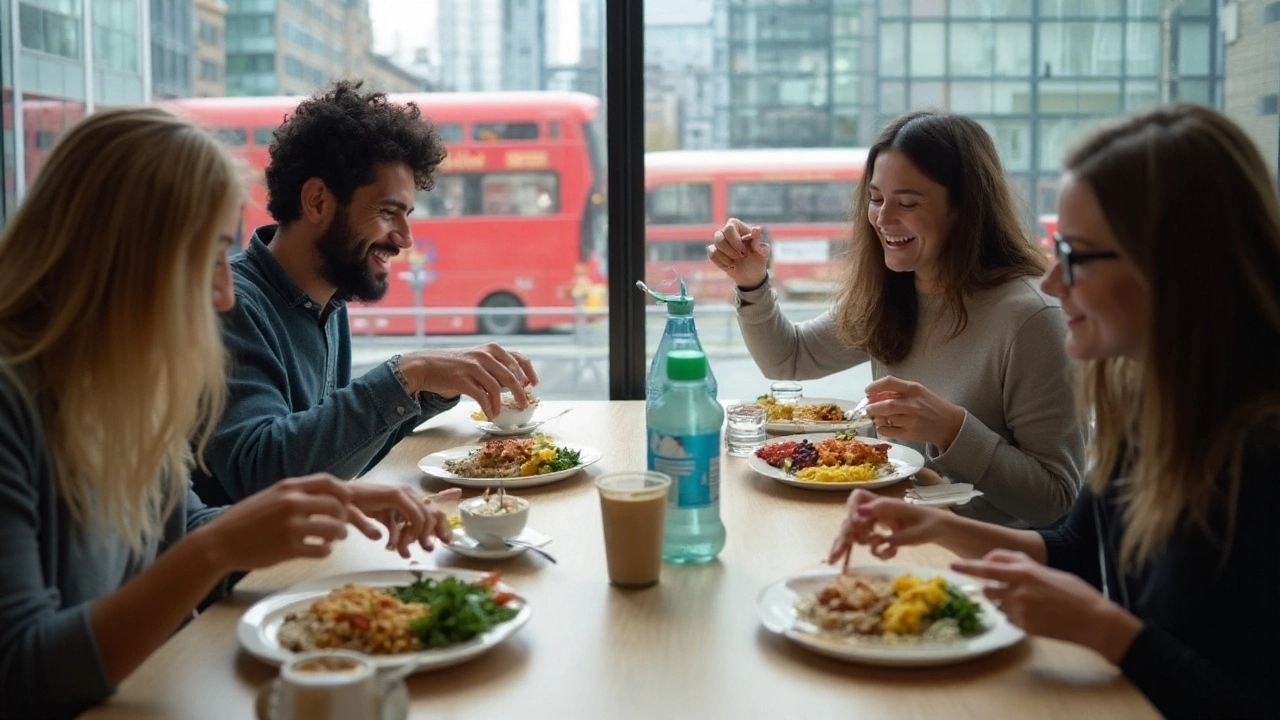
Real-World Meal Examples That Keep You Full
Use these as templates. Each example lists an easy portion, rough calories, protein, and fiber. Swap ingredients based on your budget and taste.
Citrus-dill salmon, potatoes, and spinach. Plate: 180 g baked salmon, 300 g boiled baby potatoes (skins on), 200 g sautéed spinach, lemon-dill yogurt (3 tbsp nonfat Greek yogurt, lemon, dill). Rough stats: ~650 kcal, 45 g protein, 13 g fiber, big volume. Why it sticks: high protein, high volume, potato + yogurt fiber and viscosity, clean acid and herbs for flavor without excess oil.
Hearty lentil-barley stew (vegan). Bowl: 1.5 cups cooked green lentils, 1 cup cooked barley, 2 cups mixed veg (carrots, celery, tomatoes, mushrooms), 1 tbsp olive oil, garlic, bay leaf. Rough stats: ~720 kcal, 35 g protein, 24 g fiber. Why it sticks: triple threat-protein from lentils, chewy barley for slow carbs, dense veggie volume. Add lemon zest and parsley to brighten.
Greek yogurt power bowl (breakfast or lunch). Bowl: 300 g plain Greek yogurt, 120 g mixed berries, 25 g high-fiber granola (look for 8-10 g fiber per serving), 1 tbsp chia, 15 g walnuts, drizzle honey or stevia to taste, cinnamon. Rough stats: ~600 kcal, 38 g protein, 17 g fiber. Why it sticks: thick dairy protein, viscous fiber from chia and granola, low energy density from berries, a bit of fat from walnuts.
Chicken-bean burrito bowl. Bowl: 180 g grilled chicken thigh or breast, 1 cup black beans, 1 cup pico de gallo, 1 cup shredded lettuce, 150 g roasted peppers and onions, 1/2 cup cooked brown rice, 1/4 avocado, squeeze of lime. Rough stats: ~700 kcal, 50 g protein, 20 g fiber. Why it sticks: bean + chicken protein, fiber from beans and veg, modest rice, creamy fat for staying power.
Tofu-broccoli-peanut stir-fry. Plate: 220 g extra-firm tofu (pressed), 3 cups broccoli + mushrooms, 3/4 cup cooked brown rice, sauce made from 1 tbsp peanut butter, soy sauce, rice vinegar, garlic, ginger; cook with spray oil and a splash of broth. Rough stats: ~680 kcal, 40 g protein, 16 g fiber. Why it sticks: tofu gives protein, broccoli and mushrooms give volume, peanut sauce adds flavor and a controlled fat hit.
Speed tweaks: Double the protein and veg, half the starch, if you need extra staying power. On training days, add a piece of fruit or bump rice/potatoes by 100-150 g cooked.
Quick Cheat Sheets: Portions, Swaps, and a Handy Table
Keep these on your fridge. They remove guesswork on busy days.
High-satiety proteins (pick 1-2):
- Chicken breast or thigh (skinless), white fish, salmon, tuna
- Greek yogurt, cottage cheese, skyr
- Tofu, tempeh, edamame
- Eggs + egg whites mix for volume
- Lentils, chickpeas, black beans (pair with another protein for extra grams)
High-fiber carbs (1-2 portions):
- Boiled or roasted potatoes (skins on), sweet potatoes
- Oats, barley, bulgur, quinoa
- Beans and lentils in soups, salads, bowls
- High-fiber tortillas or pitas (look for 8+ g fiber)
Volume boosters (as much as you like):
- Broccoli, cauliflower, cabbage, mushrooms, zucchini
- Leafy greens, cucumbers, tomatoes, peppers
- Oranges, berries, apples (fruit > juice)
Flavor with restraint:
- Olive oil (measure), tahini, avocado, nuts (small but mighty)
- Acid: lemon, lime, vinegars
- Heat and herbs: chili, cumin, dill, cilantro, basil
5-minute fullness add-ons:
- 1 tbsp chia or ground flax into yogurt, oats, or sauces
- Extra cup of mushrooms or shredded cabbage in stir-fries
- Swap 1/2 rice for riced cauliflower
- Broth-based soup starter (fills the tank before the main course)
Key rules of thumb:
- Protein first: build the meal around it.
- Water-rich carbs beat dry ones for satiety per calorie: potatoes > bread, porridge > crackers.
- Chew matters: whole foods beat liquids at the same calories.
- Season hard so you want the meal you planned.
| Food (cooked unless noted) | Typical serving | Approx kcal | Protein (g) | Fiber (g) | Energy density (kcal/g) | Satiety Index (Holt 1995 = white bread 100) |
|---|---|---|---|---|---|---|
| Boiled potatoes | 250 g | 190 | 5 | 4 | 0.76 | 323 |
| Oat porridge | 250 g | 150 | 6 | 4 | 0.60 | 209 |
| Oranges (raw) | 200 g | 95 | 2 | 5 | 0.48 | 202 |
| Apples (raw) | 180 g | 95 | 0 | 4 | 0.53 | 197 |
| White fish (cod) | 150 g | 140 | 33 | 0 | 0.93 | 225 |
| Beef steak (lean) | 150 g | 300 | 36 | 0 | 2.00 | 176 |
| Brown pasta | 180 g | 250 | 9 | 7 | 1.39 | 119 |
| White rice | 180 g | 230 | 4 | 1 | 1.28 | 138 |
| Baked beans | 200 g | 190 | 10 | 9 | 0.95 | 168 |
| Eggs (2 large) | 100 g | 140 | 12 | 0 | 1.40 | ~150 |
| Croissant | 60 g | 230 | 5 | 1 | 3.83 | 47 |
Notes: Satiety Index values are from Holt et al. (1995) where foods were served in equal-calorie portions; not every item has an exact published value, so use them as directional. Energy density is kcal per gram-lower numbers usually mean higher food volume per calorie.

FAQ and Next Steps (Troubleshooting by Goal)
Is there a single best food? No. But boiled potatoes, porridge oats, oranges, and lean fish were top scorers in the Satiety Index (Holt 1995). Your best move is combining these traits in one plate: high protein + high volume + fiber + modest fat.
Potatoes or rice-what’s more filling? Boiled potatoes beat white rice for fullness per calorie in lab settings. They’re water-rich and bulky. If you love rice, mix half rice, half riced cauliflower, or choose barley or lentils for more fiber and chew.
Do fats keep me full? A bit does. 10-20 g fat slows digestion and helps flavor. Too much replaces the volume and fiber that actually fill your stomach. Measure fats so they support, not dominate, the plate.
Can a vegan meal be as filling? Yes. Pair tofu or tempeh with lentils/beans and a mountain of vegetables. Aim higher on protein (40-60 g) by combining sources. Tempeh chili with beans, or tofu + lentil bowls, works great.
What about GLP-1 meds? Eat slowly, keep volume moderate, and favor softer high-protein, high-fiber foods (yogurt bowls, bean soups). Big, dense meals can feel uncomfortable when gastric emptying is slower. Talk to your clinician for personal guidance.
How many calories should my “most filling” meal have? For most adults, 500-800 kcal works for a main meal. If you’re smaller or cutting fat, use the low end with more vegetables and lean protein. If you’re training hard, add 100-200 kcal of starchy carbs or fruit.
Is breakfast important for satiety? If morning hunger is real, a protein-forward breakfast helps-think Greek yogurt + oats + berries, or eggs with potatoes and veg. If you’re not hungry, skip it and make lunch hit the targets.
Any budget tips? Choose canned fish, frozen veg, dried beans and lentils, bulk oats, and whole chickens you can roast and shred. Potatoes remain one of the cheapest high-satiety carbs.
How do I handle cravings at night? Eat a solid protein-rich dinner with volume and fiber. After, brush your teeth, sip tea, and if you need something, go for a 150-250 kcal protein snack (skyr with berries, edamame, cottage cheese with cinnamon).
What if high fiber bothers my gut? Try gentler fibers (oats, potatoes without lots of skin, peeled fruit), soak and rinse beans well, and increase fiber slowly. For IBS, a low-FODMAP trial with a dietitian can help you pick fibers you tolerate.
How do I batch this for busy weeks? Cook one pot of beans or lentils, a tray of potatoes and veg, and 2-3 proteins (tofu, chicken, fish). Store in clear containers. Mix and match with a couple of sauces (yogurt-herb, salsa, peanut-lime) so meals feel new.
Quick decision tree:
- Need max fullness under 600 kcal? Lean fish or chicken + potato + 2 cups veg + yogurt sauce.
- Plant-based? Tofu + lentils + broccoli/mushrooms + barley + tahini-lemon.
- Breakfast? Greek yogurt + oats + berries + chia + walnuts (small handful).
- Post-workout? Keep protein high and bump carbs 100-150 g cooked potatoes or rice.
“5-Day Satiety Swap” mini-plan: Take your most snack-triggering meal and replace one element per day-white bread to boiled potatoes, chips to fruit, heavy oil to broth + 1 tsp oil finish, sugary drink to fizzy water, fried protein to grilled or baked. Track hunger 0-10 two hours later and keep what works.
Research corner (for the curious): Satiety Index (Holt et al., 1995) ranked foods by fullness per calorie, with boiled potatoes topping the list. Roll’s energy-density work (Penn State) shows that water and fiber let you eat larger portions for fewer calories without losing satisfaction. Protein’s hunger-dampening effects are consistent across controlled feeding trials, and the Institute of Medicine’s fiber guideline (14 g/1,000 kcal) remains a simple, useful benchmark.


